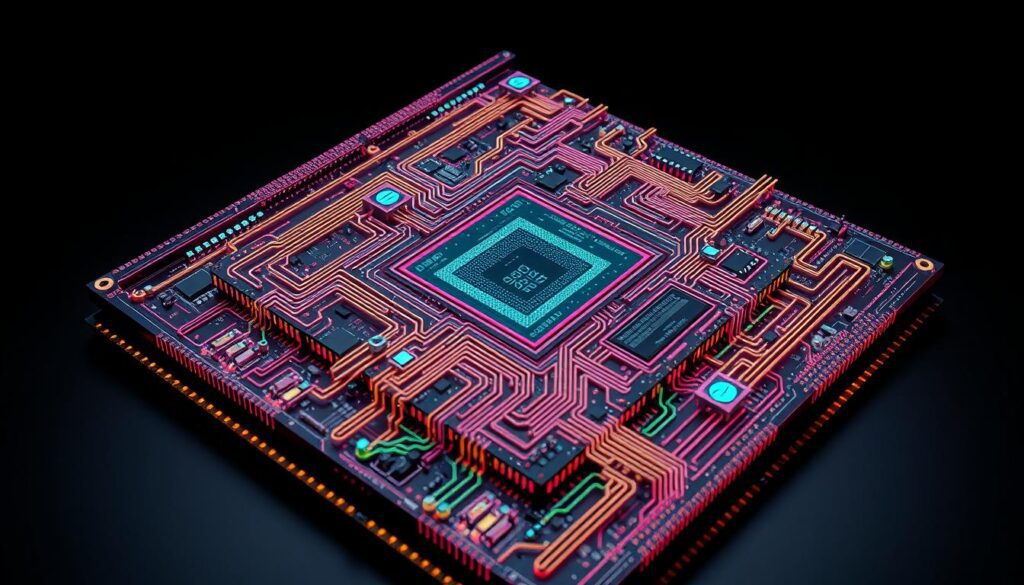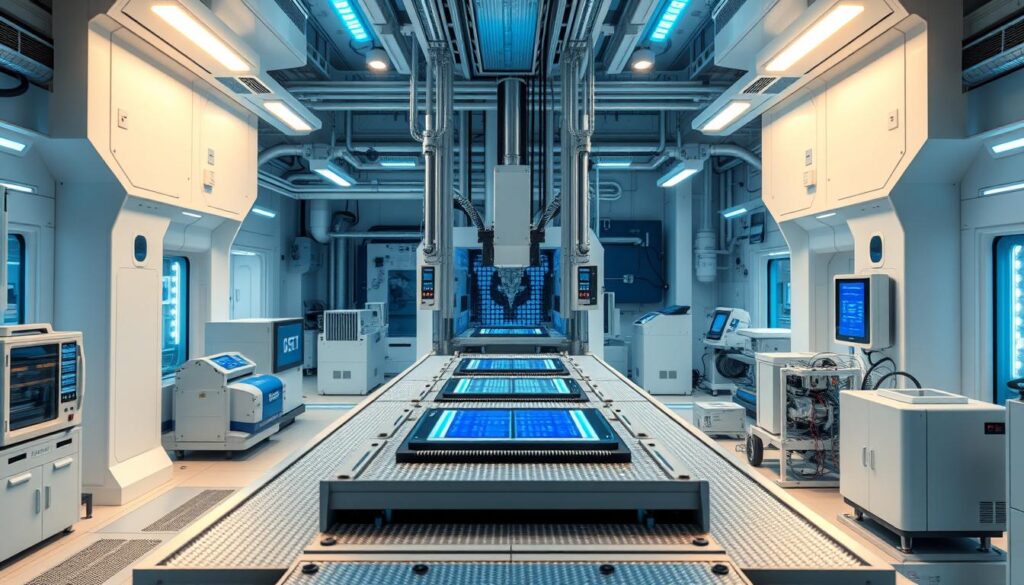In the world of making semiconductors, Mask Data Preparation (MDP) is key. It turns IC design data into mask patterns ready for making. This step makes sure the making process is both accurate and efficient. It helps create electronic devices that work well and reliably.
The semiconductor industry uses a complex process to put circuit patterns on silicon wafers. At the center of this is the photomask, a stencil that guides light and defines patterns. MDP prepares these photomasks, making sure they work well with the lithography equipment and meet manufacturing needs.
Using MDP workflows, makers of semiconductors can control photomask generation tightly. This improves the lithography process and the quality of the final circuits. In this article, we’ll look closer at MDP. We’ll explore its main functions, data structure, and quality checks. We’ll also see why it’s so important in making semiconductors.
Table of Contents
Understanding Mask Data Preparation and Its Core Functions
Mask Data Preparation (MDP) is key in making semiconductors. It turns circuit designs into usable masks. This process has several important parts that work together.
Key Components of MDP Workflows
MDP uses special software and workflows. These tools optimize circuit layouts and check designs. They also apply optical proximity correction. This ensures the mask data is precise and accurate.
Data Hierarchy in MDP Systems
MDP systems have a data hierarchy. It organizes circuit layout information into layers. This helps MDP software process and transform designs for mask fabrication.
Quality Control Mechanisms
Quality is crucial in MDP. It uses design rule checking and optical proximity correction. These steps find and fix issues in circuit layouts. This ensures the mask data is reliable and meets high standards.
Knowing how MDP works helps manufacturers improve their processes. It leads to better product quality and keeps them competitive in the semiconductor industry.
The Critical Role of MDP in Semiconductor Manufacturing
Mask Data Preparation (MDP) is key to semiconductor success. It affects photomask accuracy, chip yield, and nanometer-scale feature production. This is vital for using advanced node technologies.
MDP ensures photomask data is precise and reliable. This is crucial for making complex integrated circuits. These circuits are essential for our digital world.
MDP connects circuit design to chip production. It turns circuit patterns into photomasks for lithography. This process is vital for creating accurate nanometer-scale features.
MDP also boosts chip yield. It optimizes photomask data and uses advanced correction techniques. This reduces defects and increases functional chips from each wafer.
As the industry advances, MDP’s importance grows. It’s the foundation for making advanced integrated circuits. It ensures photomask accuracy, chip yield, and nanometer-scale feature production.
Fundamental Steps in the MDP Process Flow
The mask data preparation (MDP) process is key in making semiconductors. It changes design data from GDSII and OASIS into a format for electron-beam lithography and mask writing. This process has several important steps that help make integrated circuits accurately and efficiently.
Data Verification and Validation
The first step is checking the design data for errors. We look at GDSII or OASIS files for any mistakes. This includes things like overlapping shapes, wrong layer assignments, or bad hierarchy structures. Finding these issues early helps fix them before moving on.
Pattern Fracturing Techniques
After checking the data, we break down the patterns into smaller shapes. These shapes are easier for the electron-beam lithography system to handle. This makes sure the design is accurately printed on the photomask.
Proximity Effect Correction
The MDP process also uses proximity effect correction (PEC) techniques. PEC fixes problems caused by electron-beam lithography. It makes sure the printed features match the original design. This is done with special algorithms.
These steps turn the initial design data into a usable format for semiconductor manufacturing. This makes it possible to create advanced integrated circuits precisely.

Common Challenges and Solutions in Modern MDP Implementation
In the fast world of semiconductor manufacturing, the Mask Data Preparation (MDP) process has big challenges. The industry deals with growing data volumes and complex MDP workflows. It’s also key to cut down on how long it takes to get things done.
We’ve created strong MDP automation solutions to tackle these issues. Using advanced algorithms and fast computers, we make data management and processing faster. This helps our teams handle huge amounts of data quickly and accurately, ensuring top-quality semiconductor components.
Our R&D efforts have also led to new ways to fight the proximity effect in chip design. With smart algorithms, we improve mask data accuracy. This reduces defects and boosts semiconductor fabrication yield.

